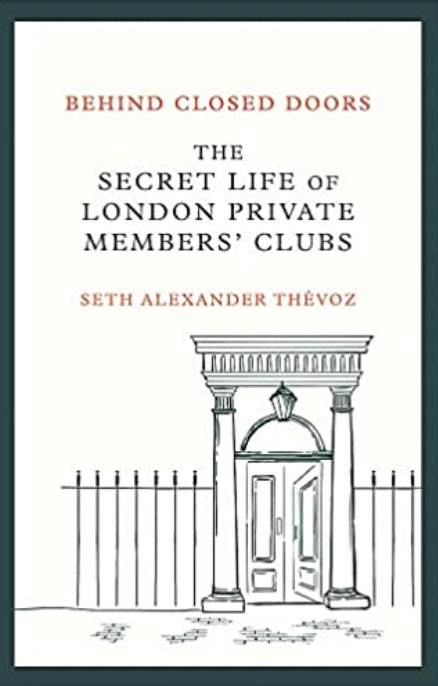
London Private Members Clubs


Behind Closed Doors is the result of a decade of research and writing on London clubs, based on exclusive behind-the-scenes access to archives and proceedings, as well as a love of gossip and scandal.
The ups and downs of London Clubland which grew to spread around the world, with its four hundred clubs, and how it had an impact on parts of the world far from London.
Thévoz reveals how everything we might have thought we knew about these clubs is wrong. They may have started out as white, male, aristocratic watering holes, as all sections of the society built their own clubs and liver their lives there, highbrow and lowbrow, women and men, working-class, middle-class, international and British. The club has been central to a distinctively British form of leisure for more than three centuries.
Liz Truss invited backbenchers to informal “Fizz with Liz” drinks parties at 5 Hertford Street, her Mayfair club, often nicknamed the “Brexit sex dungeon” frequented by the likes of Nigel Farage, Aaron Banks, Priti Patel, and Boris Johnson. London clubs have always been places where people can gather and plot. Thévoz reveals all manner of arms dealers and spies operate out of these clubs, as he was approached to spy for the Chinese in return for enticing financial sweeteners.
Virtually everything you might think you know about these clubs proves to be false. There were women’s clubs by the 1860s and mixed clubs soon afterwards strict dress codes only came halfway through the 20th century and these days membership of the older established clubs consists of 10 per cent regulars and the rest “show offs” who pop in occasionally to impress their friends.
Nine out of ten traditional London clubs have gone bankrupt: where once there were 400, now there are 40 places such as the Travellers, the Reform and the Athenaeum. The problem with keeping them afloat is often their very exclusivity. When two people get together, two of them will form a club in order to exclude the other. So, elderly members blackball newer applicants and then die taking their subscriptions with them. Deprived of income clubs sometimes downsize to cut expenses in the 1880s one Whitehall block of flats housed an assortment including Authors, Flyfishers, Northern Counties, the Chemical and separate clubs for male and female golfers.
The Albemarle club had a cosy family reputation until the volcanic Lord Queensberry left a card with the hall porter. On it, he had scrawled: “ To Oscar Wilde, posing as a somdomite. The consequences for Wilde were catastrophic, the Albermarle fared a little better.
Porters are a special genre, who are expected to have lifelong loyalty, and to them are given the power to identify and expel would-be intruders. Boodle’s had a porter, Davy, only slightly less ancient than the vulnerable club established in 1762, when showing David Niven around, Davy confidently asserted that the Scarlet Pimpernel had been a member” and all his gang “too”.
No sooner one club close than a dozen new ones appear, catering for every taste. The Garrick and the Beefsteak resist the admission of women, newer clubs spring up, from the Playboy, Soho House, and Groucho. Membership is becoming ever more esoteric, WagerWorks is a summer club in Putney, exclusively for dogs, all of whom must undergo a rigorous screening acceptance process.
The Club has been central to a distinctively British form of leisure for more than three centuries.
Behind Closed Doors: The Secret Life of London Private Members’ Clubs by Seth Alexander Thevoz, Robinson £25, 385 pages.
